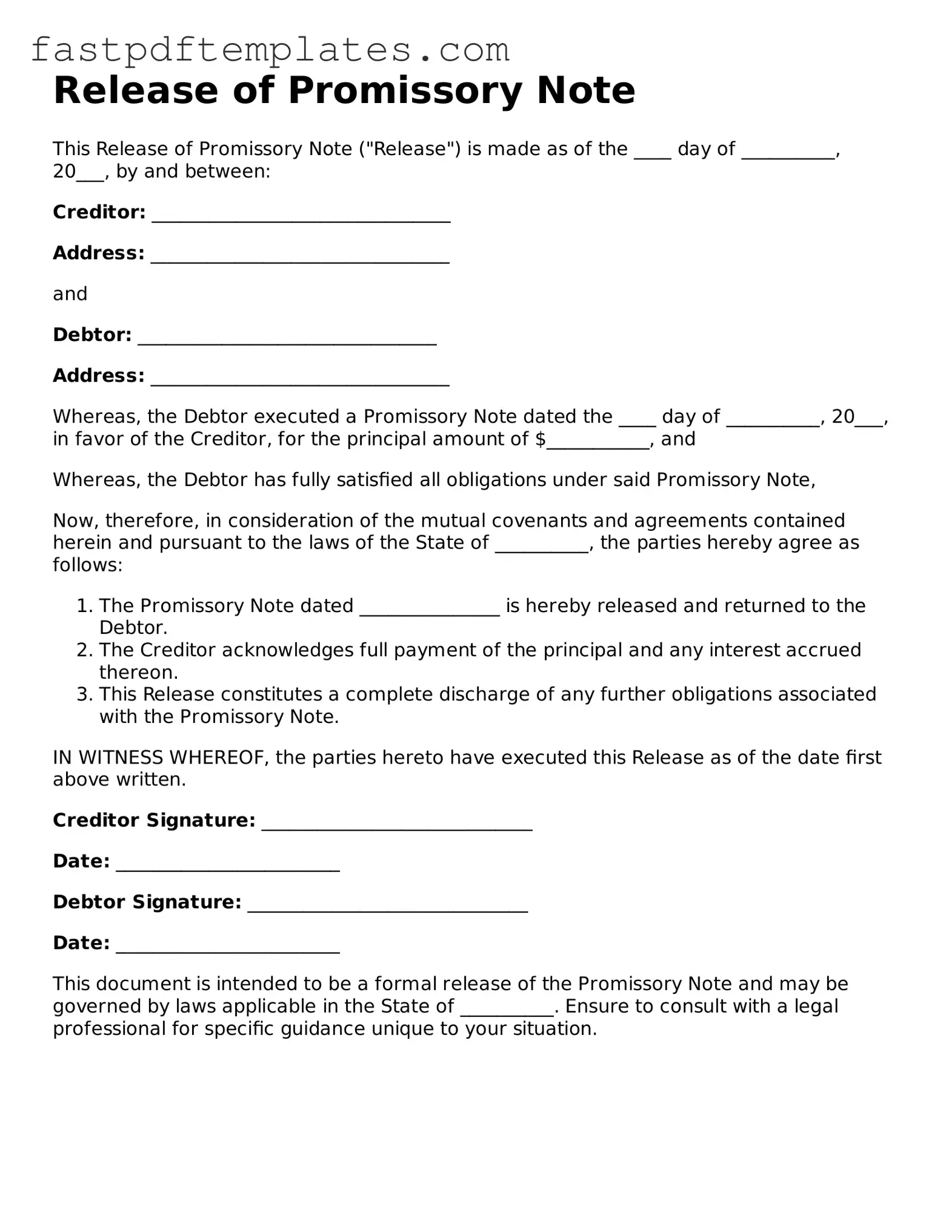Release of Promissory Note
This Release of Promissory Note ("Release") is made as of the ____ day of __________, 20___, by and between:
Creditor: ________________________________
Address: ________________________________
and
Debtor: ________________________________
Address: ________________________________
Whereas, the Debtor executed a Promissory Note dated the ____ day of __________, 20___, in favor of the Creditor, for the principal amount of $___________, and
Whereas, the Debtor has fully satisfied all obligations under said Promissory Note,
Now, therefore, in consideration of the mutual covenants and agreements contained herein and pursuant to the laws of the State of __________, the parties hereby agree as follows:
- The Promissory Note dated _______________ is hereby released and returned to the Debtor.
- The Creditor acknowledges full payment of the principal and any interest accrued thereon.
- This Release constitutes a complete discharge of any further obligations associated with the Promissory Note.
IN WITNESS WHEREOF, the parties hereto have executed this Release as of the date first above written.
Creditor Signature: _____________________________
Date: ________________________
Debtor Signature: ______________________________
Date: ________________________
This document is intended to be a formal release of the Promissory Note and may be governed by laws applicable in the State of __________. Ensure to consult with a legal professional for specific guidance unique to your situation.
